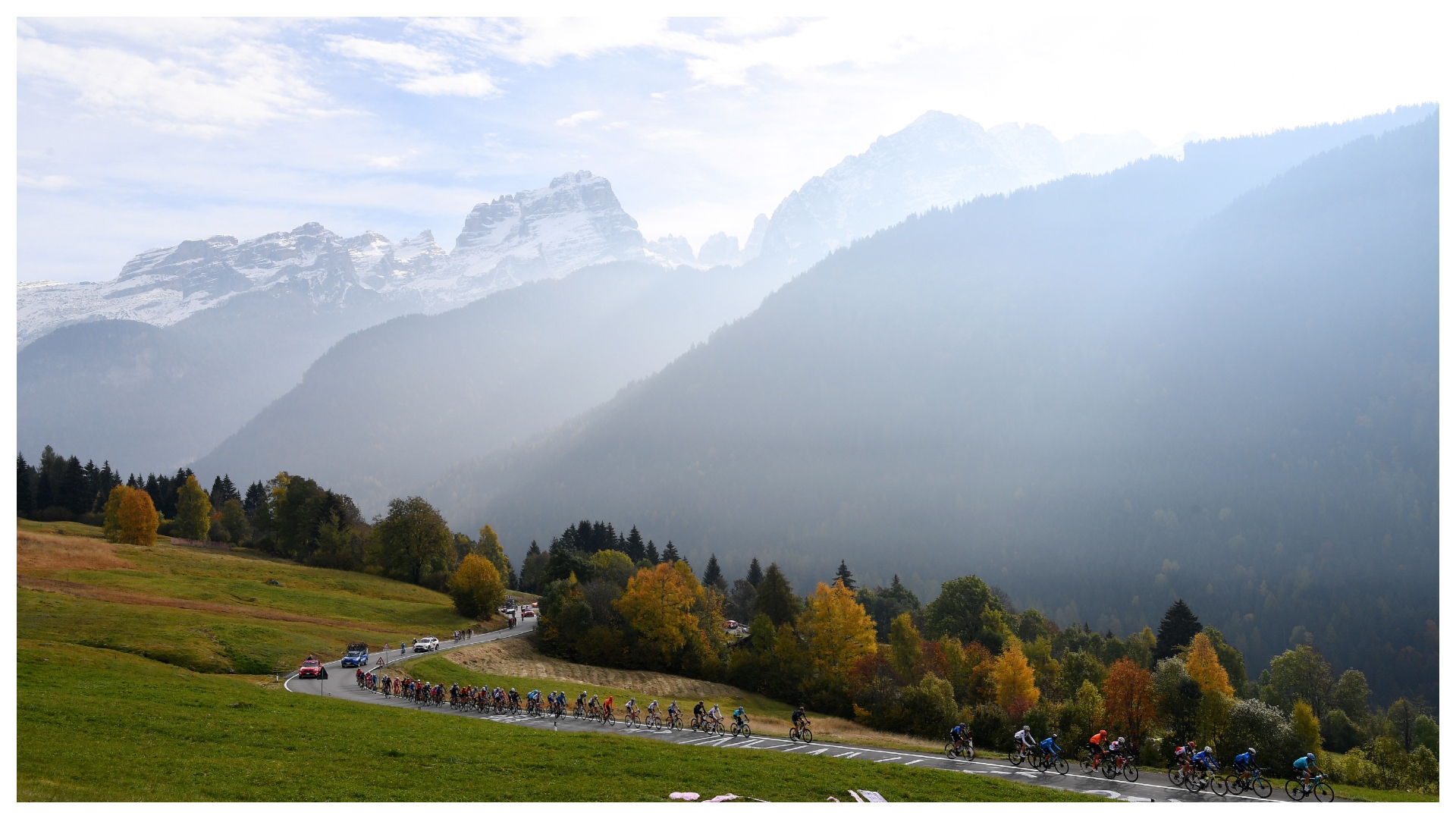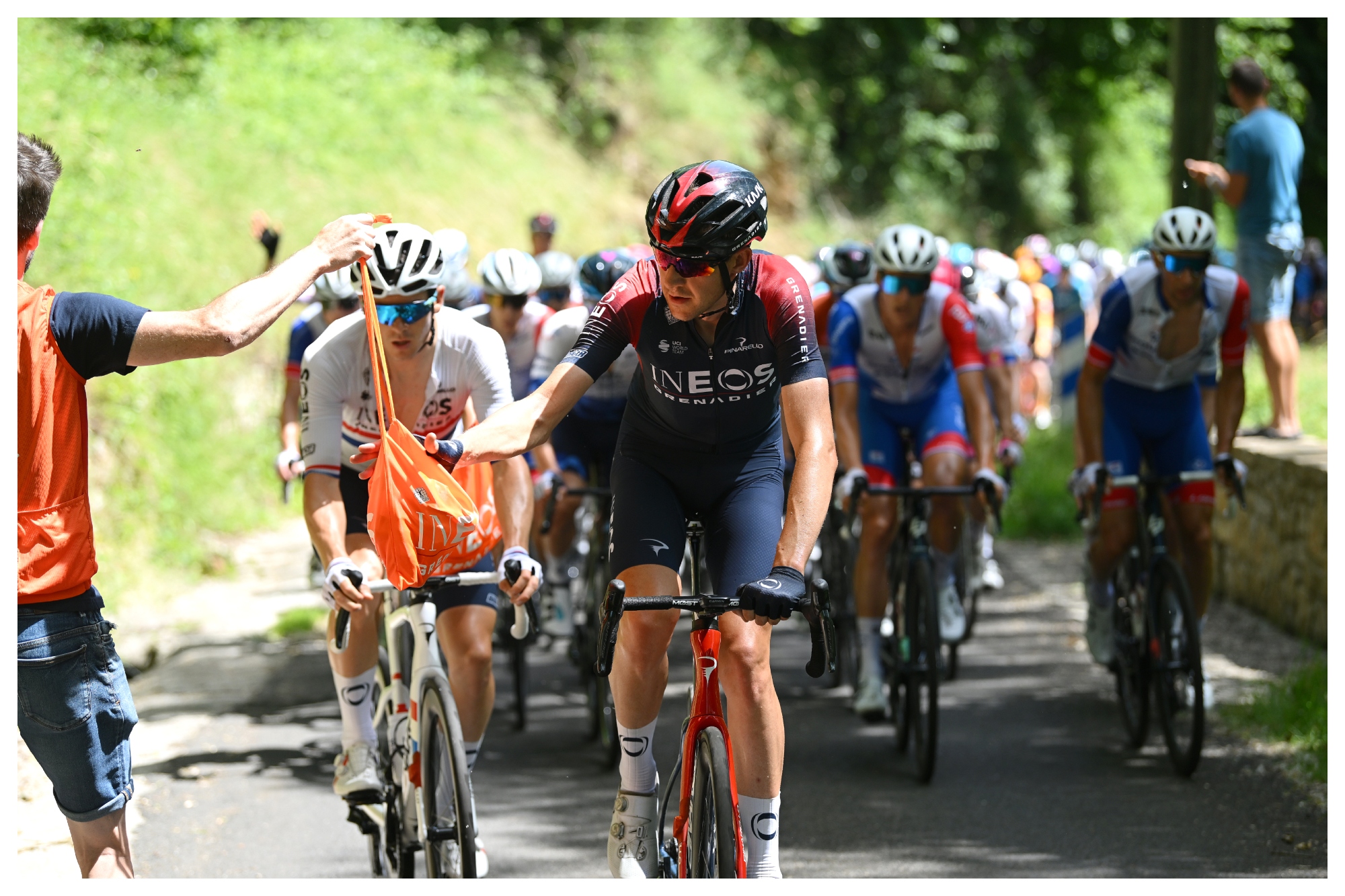
Every day of a Grand Tour is different. What doesn’t change is the need to fuel correctly to ensure each individual rider can perform to their best and then recover ready for the next day.
Dr Marc Fell is one of the INEOS Grenadiers performance nutritionists; his role is to ensure riders are fuelling optimally. “The stages within a Grand Tour are classified as either flat/sprint, hilly, mountain or time trial and each of these classifications will have unique demands, parcours and terrains,” he says.
On the critical and challenging mountain stages, fuelling is of the utmost importance. “Mountain stages determine the general classification of the race and with 4,000-5,000m of climbing, riders will expend enormous amounts of energy. These stages are often characterised by high power outputs and higher intensity efforts for longer durations. On the climbs riders will be aiming to maximally fuel to help maintain energy levels,” Dr Fell says.

Handing up food during the race is the job of the soigneurs. These important team members manage the logistics of being in the right place at the right time to give riders the fuel they need. They will also prepare the musettes which contain easy-to-eat food the riders want to eat. This includes opening packets or cutting bars in half to minimise fiddling with packaging when on the bike. They might also include some loosely wrapped fresh food, particularly for earlier parts of a stage.
In long stages riders can experience ‘flavour fatigue,’ losing interest in eating and during high intensity efforts it can be hard to chew and swallow. To help get round this soigneurs will pack a mix of products with different flavours and mouth feel – from SiS Beta Fuel Chews to easy to swallow gels and energy drinks. As there are no differences in carbohydrate oxidation between liquid, gel, or chews, riders are able to mix and match the SiS Beta Fuel range to their own preferences.
Nutrition doesn’t end when riders cross the finish line – as soon as one stage is finished preparation begins for the following day and recovery is the goal. With mountain days taking a high toll the team nutritionists and soigneurs prepare a range of foods, drinks and SiS recovery products to start replenishing muscle glycogen and replacing proteins for rapid muscle recovery. The correct food is essential to optimal performance, but occasionally relaxing the rules can also get results, using food to raise morale. Soigneurs know their riders’ favourite treat, and when to surprise them with it.
Hydration is also critical, especially when climbing in the heat. To meet these needs Dr Fell, together with INEOS Grenadiers’ Performance Solutions partner Science in Sport, meticulously plan a tailored fuelling nutrition strategy for each rider. “SiS Beta Fuel Range and SiS GO Isotonic Energy Gels are exactly suited for these needs by allowing riders to consume as much as 120 grams per hour of carbohydrates per hour in easy to consume and digestible formats,” explains Dr Fell. Beta Fuel Gels provide 40g of carbohydrates, chews provide 46g grams, and drinks 80g of carbohydrates per 500ml.
Science in Sport’s latest study shows that athletes can tolerate 120g of carbohydrate per hour, significantly higher than the 90g previously recommended. This is a huge amount of carbohydrate to consume but is made possible by the easy digestion of Beta Fuel. Science in Sport research showed that even after three hours of sustained effort, 50% of energy used was from the SiS Beta Fuel, with no crossover from carbohydrate to fat usage taking place. It was SiS Beta Fuel that powered Chris Froome’s sensational 80km solo ride on stage 19 of the 2018 Giro d’Italia.
With mountain stages often taking the longest to complete and featuring highly technical descents, maintaining focus to the finish is a key challenge. To meet this Fell includes SiS Beta Fuel + Nootropic Gels and SiS GO Energy + Caffeine Gels in the nutrition strategy. “These products not only provide carbohydrates for energy but will also provide additional nootropics and caff eine to collectively enhance riders’ mental and physical power output,” Dr Fell says.







